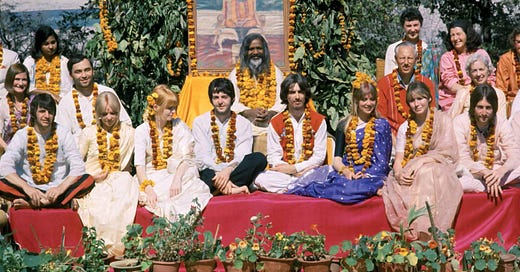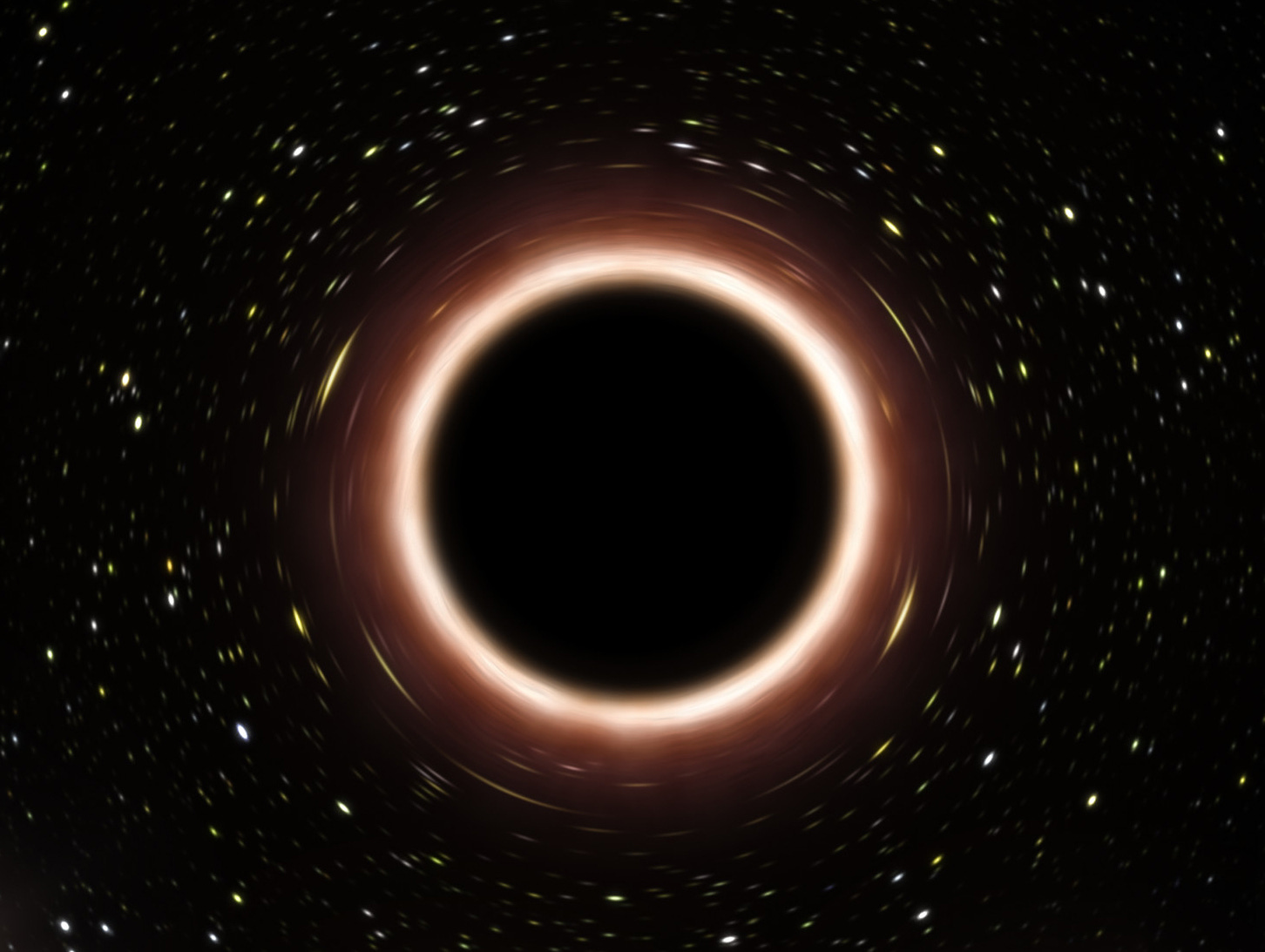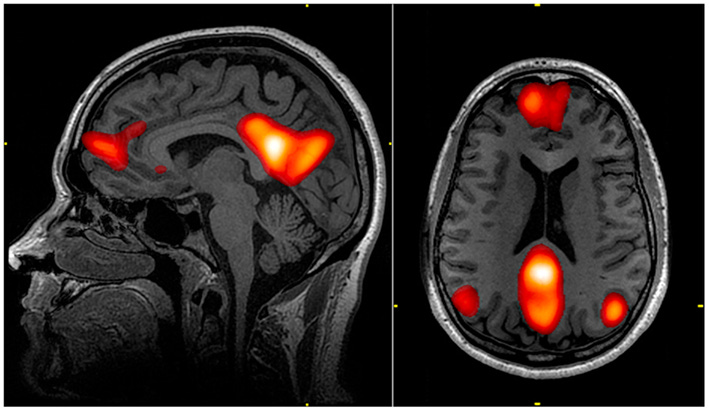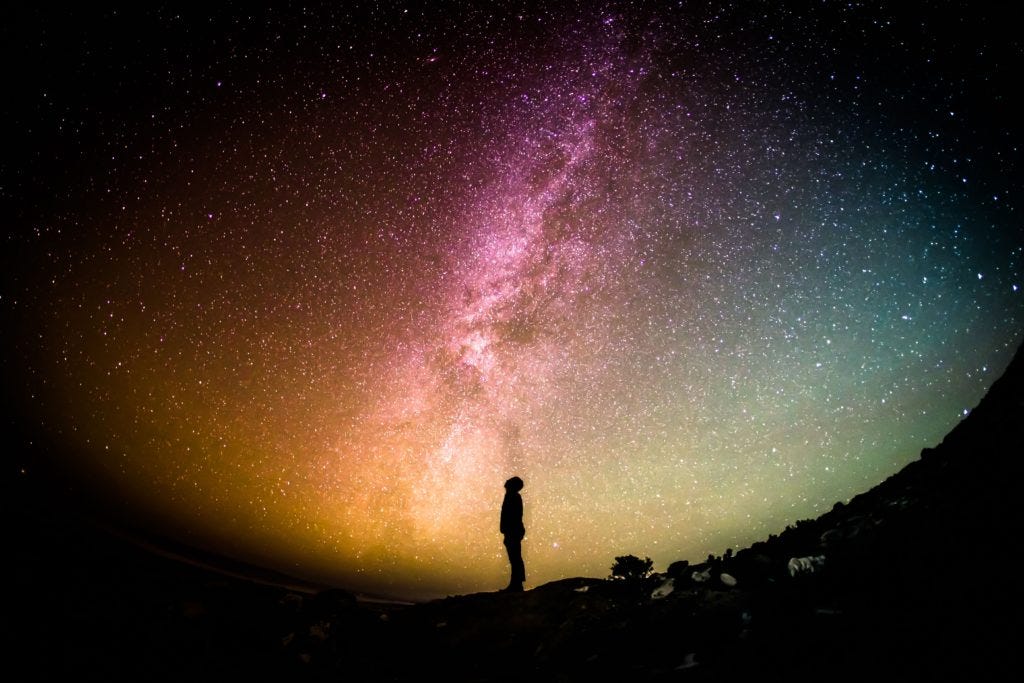The Ego Doesn't Die: Why Western spirituality is so confused, and what to do about it
Ego-death and the science of transformation
My book ‘The Bigger Picture: How psychedelics can help us make sense of the world’ is part of an Amazon promotion for the next 48 hours, so you can get the Kindle version for just $1.99 or £0.80! A very inexpensive opportunity to find out why it has 5 stars on Amazon from around 30 reviews - get your copy here
At the heart of reality, things only exist in relationship to other things. This is the theory underlying relational quantum mechanics, which argues that, from subatomic particles to human beings, existence is a vast relational unfolding.
This is ancient wisdom. We find it in Taoism, which teaches that reality emerges from the meeting of interweaving opposites. It is also core to Buddhism, expressed most clearly through the Heart Sutra: ‘Form is emptiness, and emptiness is form’. In the West, one of the fathers of psychology, William James, came to the conclusion after a dose of nitrous oxide that “There are no differences but differences of degree between different degrees of difference and no difference.”
Like James, we can all access peak mystical states that give us a lived experience of interconnectedness. In the scientific research into these mystical experiences, and many spiritual traditions, they are understood as a process whereby our sense of individual identity dissolves into the wholeness of reality. It’s often argued, both by neuroscientists and mystics, that our individual sense of ‘I’ is illusory, and that mystical experience is a process of the ego ‘dying’ or ‘dissolving’ into a wider subjectivity.
But what are the implications of framing spiritual transformation in this way? The world is full of gurus and self-help books that promote ‘dissolving the ego’ as a path to spiritual freedom. Instagram and TikTok abound with spiritual influencers taking these ideas for granted. But instead of creating a coherent sense of what it means to have a transformative experience, these ideas seem to be leading us into cultural narcissism and fragmentation.
At the same time, we need ways to go beyond our existing perceptual frames to find new solutions to the crises we face as a species. It’s a tangle we need to unravel, but its threads lead to strange places.
In this piece, I’m going to explore why the concept of ego-death is both outdated and dangerous. I’ll examine where it comes from, and argue that it keeps us stuck in old ways of conceptualising who and what we are. And I’ll explain how, when we reframe spiritual transformation to encompass something more simple and universal, we open ourselves to a far richer experience of our humanity and the sacred.
Death and Rebirth
To see why terms like ‘ego-death’ and ‘ego-dissolution’ create such confusion, we need to look at what people mean when they say the word ‘ego’. Freud described the ego as the conscious aspect of our psyche that mediates between our id, our underlying unconscious desires, and the world around us. Often, New Age and modern spiritual traditions use it in a more Jungian sense. As The Society of Analytical Psychology describes,
“Jung saw the ego as the centre of the field of consciousness which contains our conscious awareness of existing and a continuing sense of personal identity. It is the organiser of our thoughts and intuitions, feelings, and sensations, and has access to memories which are not repressed. The ego is the bearer of personality and stands at the junction between the inner and outer worlds.”
Different schools of thoughts have different ideas about how this part of our identity relates to the rest of us, and how that relationship leads to growth or stuckness. A.H. Almaas, one of the originators of a school of spirituality and psychology called the Diamond Approach, explains this through the ‘Theory of Holes’. The idea is that we have an essential state of being, connected to a deeper reality, within us. It has many forms and kinds of expression, and is uniquely us. However, as we grow up the world doesn’t allow us to express our essence, for whatever reason. We lose contact with it, and it becomes a hole in our psyche; something we’re cut off from.
Our personality structure or ego develops in part to try and fill those holes. It’s an intelligent adaptation to the pressures of your environment, which allows for some ways of being and feeling but not others. These egoic structures mimic the deeper essence of who you are, for example if you’re cut off from your inner strength you might compensate by being aggressive and full of bravado. This mimicry can never have the fullness of the underlying essence.
Neither Jung nor Almaas would argue that we need to ‘kill’ our egos. Instead, the process of transformation is one of understanding and strengthening the ego in order to access deeper parts of the psyche that allow us to become more whole, authentic and real. This is best expressed through the paradoxical idea that “you have to become someone to become no one.”
However, low resolution versions of this idea have also become popular in the ‘spiritual but not religious’ communities that proliferate in Western culture, and often there is an implicit belief that the ego is a problem to be dealt with. People engaging in meditation, yoga and other spiritual practices in the West often fall into the trap of thinking that dissolving our ego structure through different practices and experiences will lead to happiness and liberation.
A version of this idea has made its way into psychedelic research, with the ‘mystical-type experience’, defined by a dissolution of egoic structures, seen as a key aspect of how psychedelic therapy heals. Two prominent psychedelic researchers, Bill Richards and Roland Griffiths, argued in an early paper that ego dissolution is both a key hallmark of the mystical experience and defined by ‘a complete loss of subjective self-identity’.
This is the type of mystical experience reported by some Buddhists, and neuroscientists have investigated the neural correlates of these experiences. In the brains of both long-term meditators and people on psychedelics, an area of the brain called the default mode network (DMN) has been shown to have less activity, leading to radical changes in perception. This has led to a theory that the DMN is the seat of the narrating ‘I’. An overactive default mode network associated with rigid thoughts and depression. When there’s less activity, we free up and different parts of the brain can communicate in new ways, freeing us from what Prof. Robin Carhart Harris calls ‘reinforced, maladaptive habits or biases’ that keep us stuck.
But how do understand a concept like ‘sense of self’ from that kind of research? This is where our terminology and our language begins to fail us. The scientific method is designed to examine things, not qualitative experiences, and so defaults to an object-first framing. It sees a thing, the ego, as going through a change, which then leads to another thing (a change in perception). Because of what it’s set up to investigate, as an epistemology it’s apt to forget that these things are actually processes. For example, the default mode network isn’t a ‘thing’; it’s a web of relationships and processes in the brain that we’ve given a name for convenience. Likewise, our sense of ‘I’ isn’t a thing, but a process. Subjectively, we may experience it as a thing when we narrate our own lives, but ultimately what we have is direct experience of being alive; a qualitative ‘isness’ that is highly complex and constantly changing.
This begs the question, what exactly do we mean when we say ‘I’? Usually, we aren’t pausing to refer back to Jung or Freud and then making a ‘I’ statement. Instead, we’re speaking from that direct lived experience. Our ‘subjective self-identity’ isn’t just an aspect of our conscious experience, it’s all of it. When we have a profound experience of connection to something beyond us, can our sense of ‘I’ really ‘die’ or ‘dissolve’? When it does, who is ‘I’ watching ‘me’ dissolve, and how can ‘I’ remember anything about the experience?
When we explore these concepts, we end up getting lost in word salads and semantic rabbit holes. But there’s a reason that spiritual seekers and some scientists are so concerned with the ego dissolving or dying. Psychedelic research and modern Western spirituality is heavily influenced by Hindu and Buddhist metaphysics that view the ego, our subjective self-identity, as the source of our suffering. The job of the seeker is to dissolve this troublesome internal construct and reach a greater wholeness.
But that might not be what’s actually happening subjectively in these experiences, which we can investigate by looking at what people report about them. A participant in a Johns Hopkins psilocybin study describes a profound moment that changed his outlook during the trial.
“I was humbled and honored to be in this presence…. It was when I surrendered to this, that I felt like I let go. I was gone… or I should say this earthly part of me was…. I was in the void. This void had a strange and indescribable quality to it in that there was nothing to it but this feeling of unconditional and undying love. It felt like my soul was basking in the feeling of this space.”
This report and others like it don’t point to ‘a complete loss of self-identity’, but to a profound experience that the self-identity is subsumed in: My soul basking in this space implies a subject engaging with an object. People do, of course, have experiences of unity and bliss where their sense of self is radically transformed, and it should be noted that these experiences are ineffable; impossible to put into language, and that these descriptions are post-hoc trying to describe the ineffable.
However, we can’t look past the actual language people use, otherwise we’ll miss something important. We can trace the edges of what that is by looking at the Ego Dissolution Inventory created by scientists at Imperial college to study these experiences, which includes the following questions:
1. I experienced a dissolution of my “self” or ego
2. I felt at one with the universe
3. I felt a sense of union with others
4. I experienced a decrease in my sense of self-importance
5. I experienced a disintegration of my “self” or ego
6. I felt far less absorbed by my own issues and concerns
7. I lost all sense of ego
8. All notion of self and identity dissolved away
Almost every question starts with ‘I’, the subject, being asked to comment on itself. Who is the ‘I’ experiencing a disintegration of self? Can you become no-one, even for a moment, and still remember it? In some spiritual traditions, the answer is that it’s the ‘you that’s everything’ observing this, the ‘unmoved mover’ or the ‘higher self’.
But that is still part of your conception of self: only you are having the experience and nobody else will ever have it. The experience of ‘dissolving’ is inseparable from the unique point of consciousness that is located in your body, which is part of your ‘sense of I’. What exactly is going on with this tangled terminology, and how do we untangle it?
Tangled Crosses
Part of this tangle exists because the whole construct scientists are exploring in measures like the Ego Dissolution Inventory selects for one specific kind of mystical experience. It is the kind that was popular and exciting when scientists who pioneered the psychedelic renaissance, like Bill Richards and Roland Griffiths, cut their teeth: the 1960’s and 1970’s. At the time, figures like Alan Watts and Ram Das started introducing Buddhist and Hindu concepts to young Westerners hungry for a new spirituality, while the Beatles popularised the teachings of Maharishi Mahesh Yogi.
This, along with the popularisation of meditation and yoga and its associated cosmologies in the West, has led to a kind of myopia in how we understand spirituality. It causes us to overlook just how varied and different our unity experiences can be, and how they lead to different kinds of insights.
One of the best models for making sense of this is Trish Blain’s framework of The Four Forces, which argues that non-ordinary experiences can be mapped against four basic human desires and associated states; Connection, Purpose, Growth and Expression.
The experience that some psychedelic scientists are investigating when they’re talking about ego dissolution is a state of deep Connection; the samadhi experience described in Zen Buddhism. We cease being distinct individuals and instead dissolve into the vast interconnectedness of the universe. But we can also have a very different mystical experience, one in which our single point of consciousness becomes the whole universe, where we tap into a deep sense of Expression where we feel ‘all is one and I am it.’
Alternatively, we might have a peak experience in which we see the world as full of meaning, intention, and direction. The true nature of things is revealed, we see underlying patterns behind things, and have a sense that all is predetermined. This is an experience of deep spiritual Purpose. We can also go wild with bliss in an ecstatic experience in which we’re filled with life-force energy and aliveness, as if the universe is flowing through us. This state of profound Growth can happen in Tantric experiences, like a kundalini awakening, or in ecstatic dance.
Sometimes, they all happen at the same time. The Institute for Mystical Experience Research and Education has an extensive resource of first-person accounts of mystical experience. Reading through them, it was easy to map them onto Blain’s Four Forces model. Sometimes, they include all of the forces at once. For example, British philosopher Paul Bunton, who had studied both Eastern and Western traditions, recounts a profound mystical experience he had later in life. Bunton begins his account by describing a profound Connection to a higher power.
“Suddenly, I realized that this was a crushing of the self by an unknown power beyond myself. It was then that I began to fervently pray….Next a feeling of oneness with God followed. I seemed to know and understand much that I had never understood before. My ego was going and my happiness increased every moment.”
He also experienced a profound Expression of divinity through his own perspective
“The word ‘I’ was pronounced in me; I saw it was the only reality, all else illusion. I was in every person there, but they did not know it … ‘I AM’ is the foundation of truth and reality of the whole universe…”
In other moments, he was overwhelmed with the energy of the experience, which maps to Growth.
“The power of God surged through my being with such force I realized that within myself, at the center of my being, God was always there, strong, great, loving, blissful.”
Ultimately, his experience would also be defined by a sense of transcendent Purpose:
“I could see now that everything that had happened to me in former years was part of a tremendous plan and had to happen that way…The Cosmic Vision revealed the true meaning of freedom and fate, and showed how illusory is the feeling of free choice which we possess…”
Bunton’s account, and others like it, demonstrates the incredible variety of mystical experience we can access, and how differently it can manifest across cultures and cosmologies. Note that it’s as often full of agency and content, purpose and desire as it is by a dissolution of identity or perspective.
Striving and Surrender
However, the distinction between these very different ways we can conceive of our ‘sense of I’ in a mystical experience is often lost in translation in society. Someone might go to a meditation class and be told to let go of their egoic desires, and the next day be in a psychotherapy session designed to strengthen their ego. There are very few places to find the wisdom that tells us when to do one or the other. John Vervaeke has argued that Neoplatonism holds the key, while Ken Wilber or Trish Blain have developed detailed maps to make sense of these complex states and experiences.
Ultimately, our conceptions about transformation and divinity are drawn from deep unconscious structures. In the West, our history, language and conceptions of what human beings are owe much to Judeo-Christian metaphysics. The mystical experiences of this tradition are prophetic in nature, defined by a profound sense of Purpose and Expression. Prophetic mystical experiences are full of content and agency, you remain you while the divine speaks directly to you; think of Moses and the burning bush.
They are often linear and historical. In Christianity, the ultimate example of spiritual transformation is the death and rebirth of Christ. In the Christ myth, it is the literal body (the object) that dies and then comes back. There is no Christianity without the resurrection; it’s the foundation of the whole religion, and much of the grammar of Western thought. Christianity is a religion of death and rebirth, and try as we might, those of us with a Western psychology often see transformation through this lens, whether we’re scientists or seekers.
The trouble comes when we combine different types of spiritual transformation together into frameworks that can’t hold their complexity and contradictions. For example, people seek out high dose psychedelic experiences, or chase other peak states looking to ‘get to the goal’ of ego death hoping it will fix their problems. This is quixotic and dangerous, because if you’re looking to ‘erase your sense of self’, what you’re actually chasing is radical dissociation, and permanent psychosis.
It’s a misconception derived from a sloppy blending of Eastern and Western metaphysics. The ego dissolves into the unity of reality described by Buddhists, but then comes back through a prophetic transformation much like Jesus. Unsurprisingly, this leads to a lot of false prophets who think they’re enlightened simply because they’ve had a peak experience. This isn’t surprising, because the frame we use to interpret these experiences is as important than the experience itself. If we see spiritual transformation through a contradictory lens, we will end up with contradictions like ‘spiritual masters’ who sexually abuse their students, spiritual bypassing, and the commodification of the sacred.
Relating Anew
So how do we untangle this? Despite all of the confusion we’re faced with around mystical experiences, they are our birthright as human beings, and a vital part of growing and evolving. As I argue in The Bigger Picture, what we learn from them could also be applied to how we tackle system-level problems. So what’s a better way for the legions of ‘spiritual but not religious’ people (myself included) to make sense of transformation than ‘ego death’?
We simply have to return to where we began; to the idea that reality itself is relational. Instead of seeing mystical experiences as a process of death and rebirth, we can see them as a process of changing how we relate. When we have a peak mystical experience, there isn’t a discrete object, your ego, which vanishes into wholeness and is then magically reborn with roughly the same memories, personality structure and desires it had before.
Instead, what changes is the way in which you relate to the rest of reality. How you, as a distinct point of consciousness, conceptualise your existence in relation to the cosmos, your own feelings, thoughts and memories. It is a process of revealing the nature of interconnected relationships that were already there but outside of your perceptual frame, rather than a process of erasure and reconstruction.
It’s more useful to talk about an ‘ego-reframe’ than an ‘ego death’. What is happening phenomenologically in any peak mystical experience is a process of you widening your perceptual frame of who and what you are. For example, I might start out as ‘little old me’ stuck in my repetitive patterns and narrow perspectives. I then have an experience of profound connection, purpose, growth or expression. In that process, ‘little old me’, with all my hangups and delusions and suffering, is invited to relate in a new way to a reality that is both me and not me at the same time.
It’s radical new perspectives that truly change us, that help us see the error of our ways, and give us hope for a better tomorrow. While the boundaries between self and other may become more fluid in that process, and we may even have moments of feeling pure unity, we are always experiencing that through our own perspective. What’s actually changing is where we’re looking from, and how much we’re seeing. How we relate to our pain, to our dreams, to those we love, and to the cosmos.
As long as you’re alive, breathing, speaking and having a qualitative experience that no one else is having, you won’t transcend your sense of ‘you’. Perhaps it’s not something to be transcended, but to be recontextualised so that life becomes a dance, a joy, an adventure. You can wake up, show up, grow up, clean up and do everything you can to be freer, more authentic, more content. But you can’t dissolve or die, until you actually die. There’s nowhere to run to, no strategy to employ, no goal to attain.
Me and You and We
The physicist Carlo Rovelli, one of the key proponents of the relational theory of quantum mechanics, has proposed that "Quantum mechanics is a theory about the physical description of physical systems relative to other systems, and this is a complete description of the world."
If this is the case, then it isn’t a stretch to consider our internal experiences of spiritual transformation as a moment of revelation that our existence itself is relational. Nothing happens to the ego in this process; it isn’t an object that’s being transformed. It’s a process that extends and relates in expansive, exciting new ways. It may realise it doesn’t exist independently, but this doesn’t mean it dies. It just looks up and sees the glory it’s part of.
Changing how we conceptualise mystical experiences could have profound consequences, because how we frame transformation dictates the kind of transformation we can experience. Right now, too many spiritual preconceptions are based on a paradigm which object-obsessed which deepens our cultural narcissism. Our egos (things) need to be purged so we can experience a ‘better thing’ (divinity).
If instead we start to explore more relational framings of inner transformation, we open up a much richer, more complex way to make sense of the wide variety of spiritual experiences we can have. It may be, if the relational model of quantum mechanics is correct, that this is how all things arise and change. At our deepest level, down to the cells and atoms in our bodies, we are all relational processes. Processes that never truly die, but simply change form.










Since you mention The Beatles, it's interesting to note what John Lennon reported to Rolling Stone in 1970: "I got the message on acid that I should kill my ego, and I did, y'know. I was nothing, I was shit." It took him years to recover and he seems to have developed symptoms of depersonalisation-derealisation based on descriptions in The Beatles biography by Hunter Davies. Funnily enough, it was a later pair of LSD trips in 1968 that reconvinced him of the reality of the ego.
Someone else worth noting is George Harrison, who was also a heavy LSD user in 1966/7. You can see George's views on the ego in his later song 'I, Me, Mine':
"Having LSD was like someone catapulting me out into space. The LSD experience was the biggest experience that I’d had up until that time… Suddenly I looked around and everything I could see was relative to my ego, like ‘that’s my piece of paper’ and ‘that’s my flannel’ or ‘give it to me’ or ‘I am’. It drove me crackers, I hated everything about my ego, it was a flash of everything false and impermanent, which I disliked"
What’s curious though is that whether a Bach, Kepler, Einstein, Planck, the saints and mystics from Augustine to Rumi, Plato or Confucius, none of them needed psychedelics to transcend and develop a higher self, and yet there seems to be a campaign that ignores that reality and presents a new quick shortcut to transcendence.
It’s all very reminiscent of Huxley final novel, The Island. Have you read it?
I know psychedelics can have benefits, but I really have to wonder when I hear a lot of the modern psychedelic prophets tout the benefits without much reference to the darker historical side of the question, and its implications today.
For instance, how aware are we of the ongoing MK-Ultra programs, the newer ones? The “official story” is that MK-Ultra was shut down and that’s the end of the story. But if we look at many of the discussions around psychedelics and their ability to help repattern the mind, it looks like the MK-Ultra program has simply been mainstreamed. Notably, one of MK-Ultra’s greatest goals was the creation of false memories. These could be used to program assassins or to simply repattern someone’s sense of identity ie to “forget” certain things and “remember others.”
Psychedelics played no small part in this. It’s know that psychedelics allow one to take a distance from their memories and past, and become open to new ways of thinking in a very drastic manner. Naturally, this can be used for good or for bad, much like hypnosis. But if it has such power, is there any doubt the first on the case are the intel agencies themselves?
There is a great book by journalist Tom O’Neil, “Chaos: Charles Manson, the CIA and the Secret History of the Sixties.” Among many quotes and new research, he cited pages from journals by clinicians handling “the Family” at the HAFMC.
This quote stands out:
“One of these articles hoped to find out ‘whether a dramatic drug-induced experience’ would have a ‘lasting impact on the individual’s personality.’ Another observed that feelings of ‘frustrated anger’ led people to want to try LSD: ‘The soil from which the ‘flower children’ arise,’ the author wrote, ‘is filled more with anger and aggression, thorns and thistles, rather than passion and petunias.’ Under ‘emotional pressure,’ acid could induce ‘images and sensations of anger or hate magnified into nightmarish proportions.
David Smith had studied these same phenomena, formulating an idea that he called ‘the psychedelic syndrome,’ first articulated in 1967 or early’68.
The gist was that acid, when taken by groups of like-minded people, led to a ‘chronic LSD state’ that reinforced ‘the interpretation of psychedelic reality.’ The more often the same group of “friends” dropped acid, the more they encouraged one another to adopt the worldview they’d discovered together on LSD, thus producing ‘dramatic psychological changes. Usually the psychedelic syndrome was harmless, but regular LSD use could cause ‘the emergence of a dramatic orientation to mysticism.’“